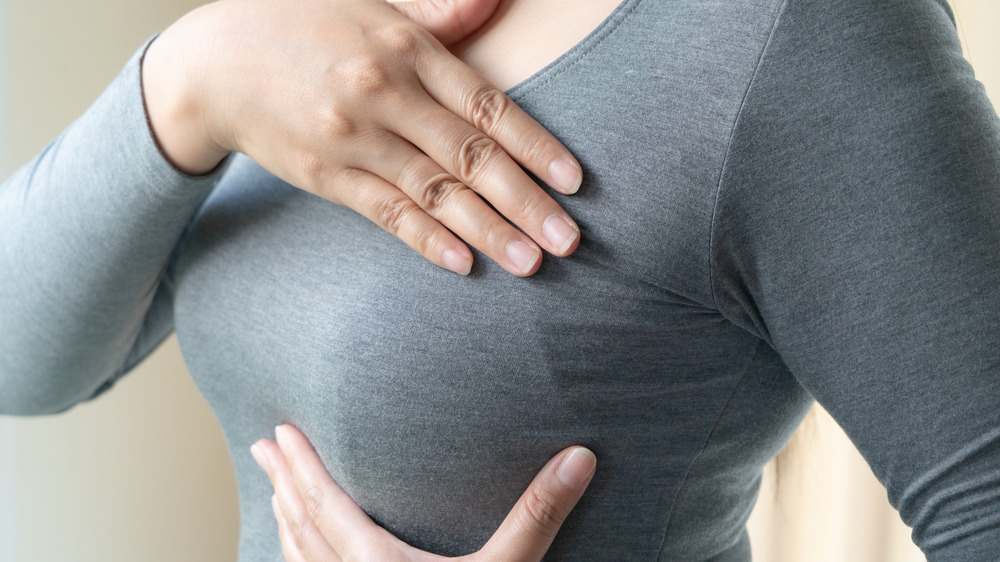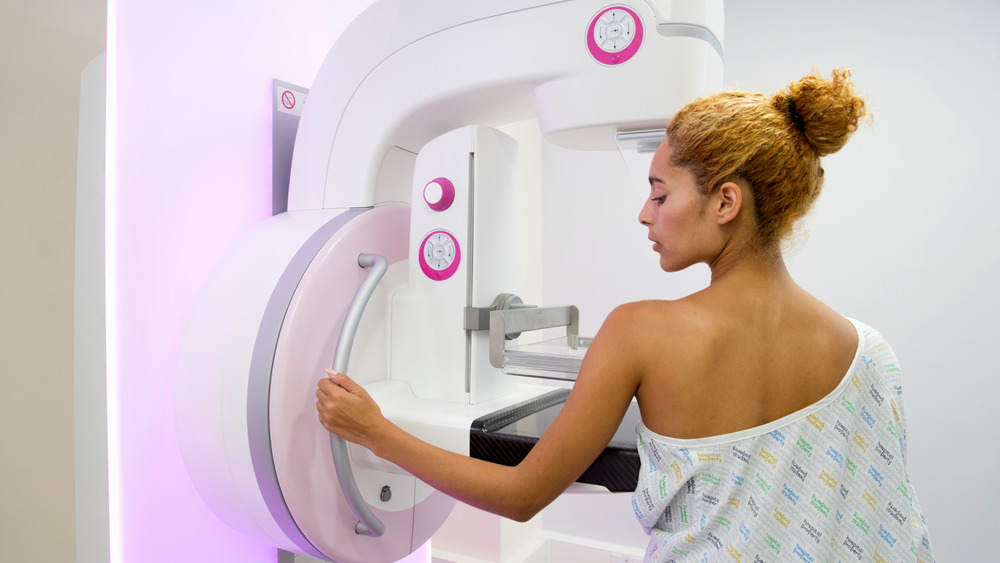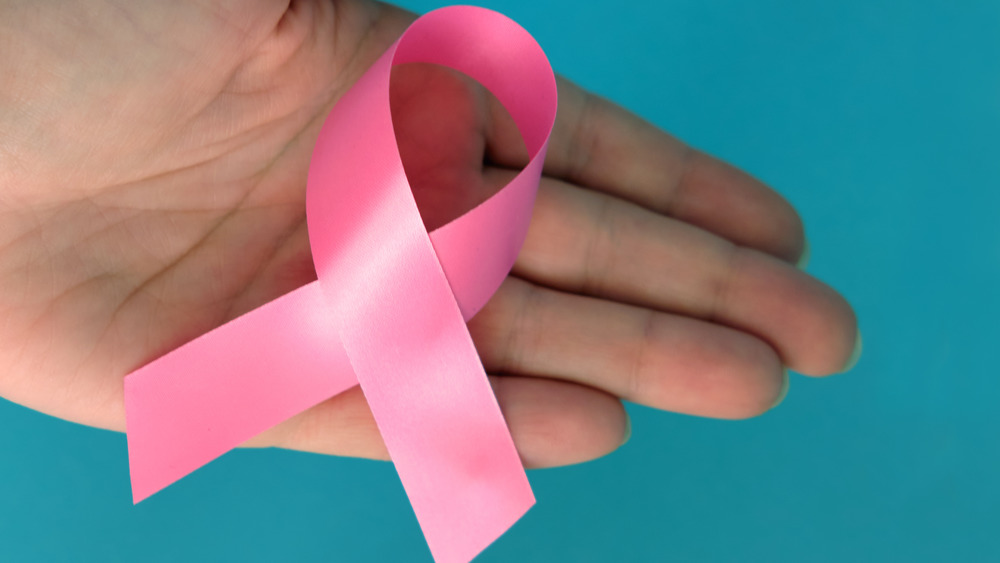The First Thing You Should Do When You Feel A Lump In Your Breast
Finding a lump in your breast can be confusing and frightening. Questions may swirl about what it means, how concerned you should be, and what to do next. But medical experts say at that moment, the best thing you can do is remain calm and ask yourself some key questions.
Dr. Anna Cabeca, a triple board-certified OB-GYN specializing in women's health, spoke with Health Digest and outlined a few things to look out for. "The first thing you should do when you feel a breast lump is to really assess it. What size is it? Is it tender? How long has it been there? Does it move freely or does it feel stuck and how does the temperature of the skin feel around it?" she said.
Cabeca also pointed out that this is not the moment to let yourself overwhelm with worry. "Certainly don't panic, because changes to the lumpiness of your breasts throughout the month is not unusual. The key is to know what your breasts feel like and how they change throughout the month — before, during, and after your menstrual cycle," she said.
The American Cancer Society no longer recommends monthly breast self-exams, but does encourage all women to be familiar with the look and feel of their breasts, so they can catch changes quickly.
Here's what to watch out for
There are few things to look out for when assessing your breasts. "Look for changes that don't go away, a sensation that this is something new and that feels stuck. Does it have a mobile, warm feeling, rounded edges, or is it irregular? Does it feel smooth or spiky or irregular as well?" said Cabeca. She also urges women to call the doctor when they notice changes in the size or appearance of their breasts, if breast pain lingers after a period, if there is a newly inverted nipple, and if there is any itchiness, redness, or scaling on a breast.
When checking your breasts, it's always a good idea to feel above the collarbone and under the arms for swollen lymph nodes, Cabeca advised. And use different levels of pressure with your fingers so you can be sure to feel all layers of the breast tissue, according to the Mayo Clinic.
The time to call your doctor is when you find a lasting irregularity. "If a breast lump doesn't go away within a couple of days, if there is an internal concern that this is something unusual, or if you have any questions, certainly have it checked out. The doctor will assess if it is likely benign or if it is something that needs a more serious diagnostic workup, and if there is a concern for cancer requiring an ultrasound, mammography or MRI," Cabeca said.
Other reasons for lumps to appear
And if you happen to find a lump, don't let your thoughts automatically jump to cancer. In fact, Cabeca said most women will deal with lumps at some point in their lives, many of which turn out to be benign. Cysts, fibroadenoma, and fat necrosis are all non-cancerous reasons for lumps to form.
"It is difficult to determine without proper medical evaluation what causes a breast lump or change to your breast(s). Signs can have multiple causes," Cabeca said. "The bottom line is that a breast lump, whether it's cancerous or not, will cause anxiety — at least until we know what the source is; so it is always best to seek medical advice, if nothing else, for your peace of mind. And you should never underestimate the mental health component to all of this: to minimize the stress and the fear, be informed and check your breasts, and check under the armpits and your clavicle routinely!"



